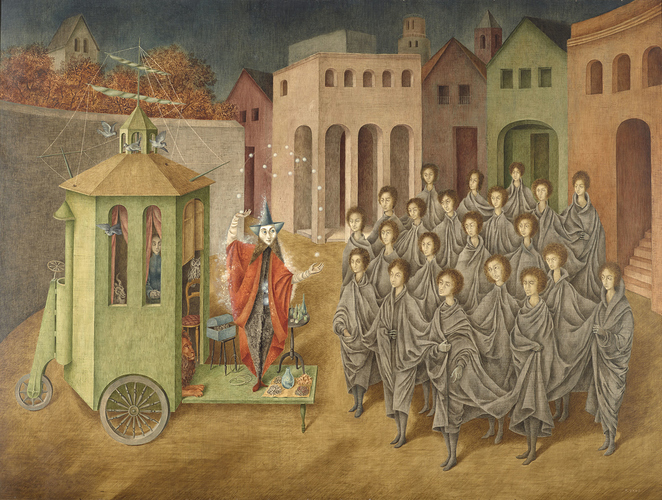In the realms of literary publishing and art, there has lately been a resurgence of interest in the women of surrealism, who were largely written off and ignored in their own time. This welcome trend continues with the recent publication of three new books: Letters, Dreams, and Other Writings by the Spanish surrealist painter Remedios Varo; Now, Now, Louison by French writer Jean Frémon, a fictionalized account of the life of Louise Bourgeois; and The Milk Bowl of Feathers: Essential Surrealist Writings, a relatively gender-balanced collection edited by Mary Ann Caw. All three books are reviewed by Claire Mullen at Public Books. As Mullen writes, these books demonstrate that the surrealist women were not mere muses for their male counterparts, and they’re often depicted. They were equal and brilliant contributors to surrealist thought and art. Check out an excerpt of the review below.
Women like Varo were always a part of the surrealist movement, drawn by the rhetoric of overthrowing many of the conventions that held them back, but their presence was often secondary to that of their male counterparts, and largely unacknowledged by historians and academics until decades later. Many surrealists are known for treating their female peers as muses, objects, and the physical embodiment of their own sexual desires. This narrative is upended in three new books, in which the lives and works of women surrealists are regarded, and reintroduced, as deserving in their own right.
From the beginning surrealism was a revolutionary movement, meant to combat the rising tide of fascism and political control in Europe through artistic and personal exploration. The movement’s founding is considered to coincide with the 1924 publication of André Breton’s Manifeste du surréalisme. Breton described what he saw as the surrealists’ battle against both a “reign of logic” that had manifested in excessively rational bourgeois thinking and the violence of World War I.
Images: Remedios Varo, The Juggler (The Magician), 1956. Via moma.org.
